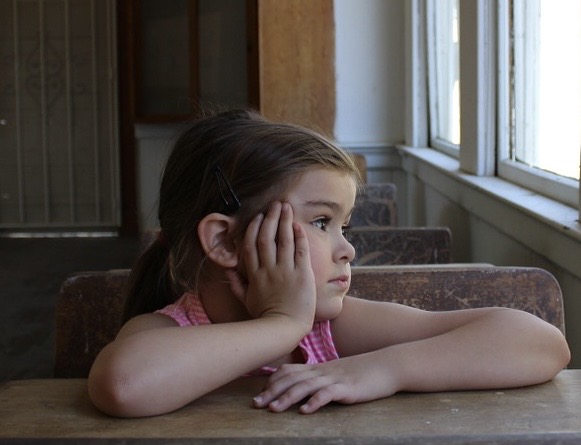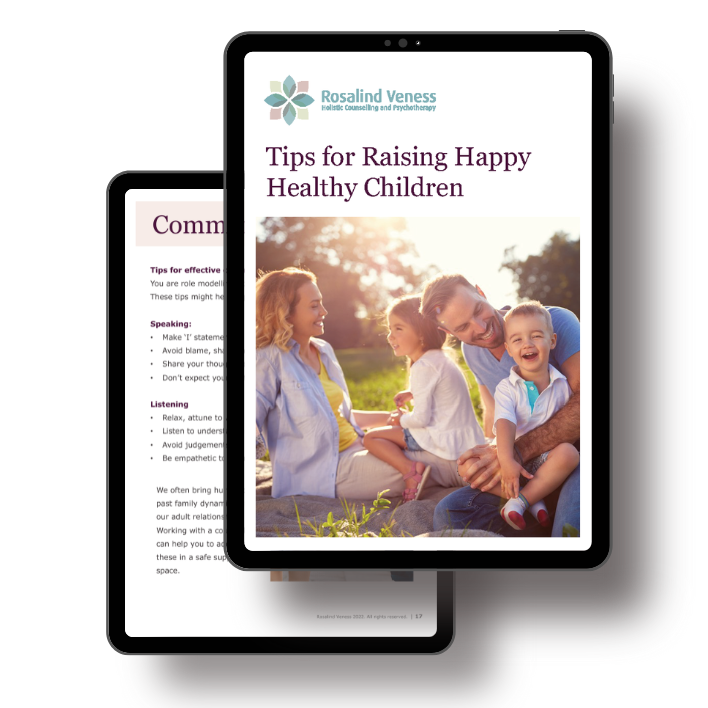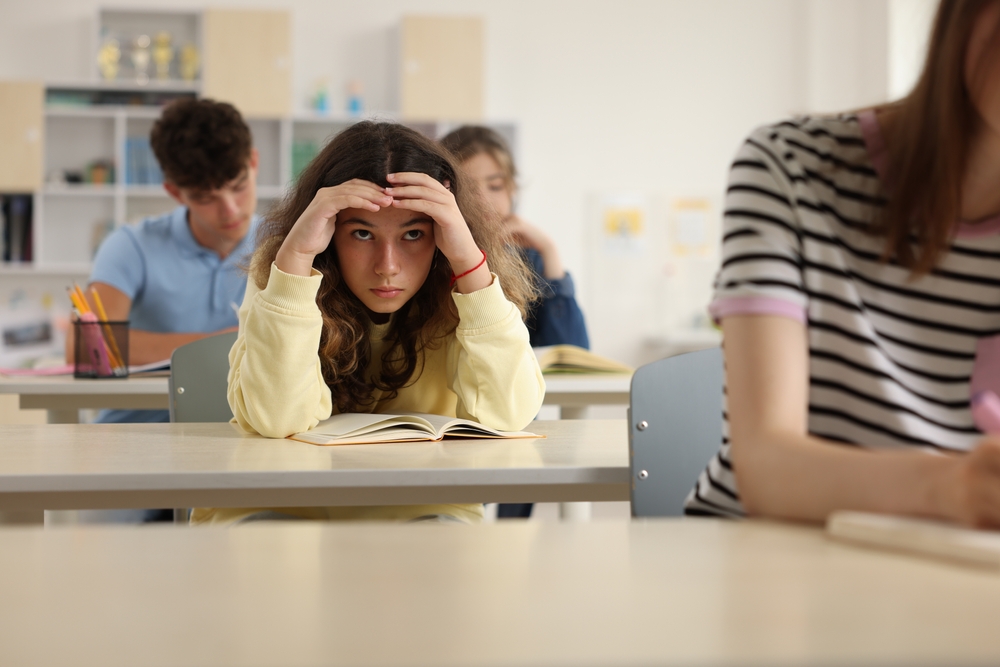
Children with signs of dyslexia and/or ADHD often struggle with listening or auditory processing.
What is Listening?
Hearing refers to the ability to take in sounds with our ears, bringing sensory information to our brains. It is also linked to balance, body movements and coordination.
Listening, on the other hand, refers to our ability to process the sounds that we are hearing. It helps us to make sense of the world, and is an important part of being able to focus and pay attention in the classroom, as well as being able to read and write.
When listening doesn’t develop well, we may struggle with communication. Poor communication can be linked to depression, speech and language issues, hyperactivity, autism, reading and other learning difficulties such as ADHD and dyslexia.
Listening as Part of Early Development
Child development happens in a certain sequence, and cannot be rushed. Each new stage builds on the foundations of the previous one. Immaturities in early stages can impact on a child’s feelings of safety and consequently their learning potential. We need to feel safe to learn.
Your child’s listening started before they were even born, as they learnt to tune in to the vibrations of their mother’s voice. Stephen Porges neuroscientist, and developer of the Polyvagal Theory has noted that low-frequency vibrations are sensed as frightening, while well-modulated vocal tones give a feeling of safety and calm.
Many things can disrupt a child’s early listening development, such as experiencing trauma and overwhelm, witnessing loud noises, arguments and raised voices. Listening can also be disrupted by ear infections, creating muffled sounds. The result is often expressed with challenging behaviour and learning difficulties, such as dyslexia and ADHD. Once we understand that the behaviour is coming from an immature sensory system, we can take steps to support them.
Classroom Stress Makes Learning Difficult
Learning happens best when we feel safe, and our senses are open to taking in new information. When we don’t feel safe, our nervous system will scan our environment for sources of threat.
Many children find classrooms stressful. With nervous systems on high alert, learning becomes difficult. A room full of sights, sounds and smells, can be overwhelming for a sensitive child. As a result they will often ‘act out” or shutdown.
These behaviours are bringing us a message. They are natural responses to feeling threatened, and can often look like signs of ADD, ADHD and Dyslexia.
What Does Listening have to do with ADHD and Dyslexia?
Learning in the classroom, requires the ability to focus on the speaker’s voice, and process what they are saying. To do this we need to be able to block out background sounds. Assessment shows that children with delays in their early sensory and motor development, particularly listening, often struggle with maintaining focus and attention. The resultant behaviours can look like signs of ADHD and dyslexia.
Have you noticed that at times it is easy to listen to what someone is saying, and at other times your attention tends to drift, and you find you are easily distracted? The same happens to children in the classroom. You may also notice that certain voices seem soothing, while others can be irritating?
What you Might See
You might notice that a child is sitting quietly and appears to be paying attention, but when questioned, has been off in dreamland. Others might be easily distracted, talking to classmates and disturbing their neighbours. Perhaps another child will find it easier to concentrate by repeatedly tapping their pencil against the desk, or making some other repetitive movements.
Some may struggle to make friends and connect socially. Others may startle easily at sudden or loud noises. These can all be signs of delays in auditory development, or listening. They can look like symptoms of ADHD or dyslexia.
To understand these behaviours, we need to know more about how our nervous system works.
Listening and Your Nervous System
Certain vocal tones may be soothing, while others are irritating, and can “rev” us up. They are part of a system known as your autonomic nervous system, or ANS. Your ANS responds to things that are happening without your awareness. That is, your response is happening without you realising it.
Bonnie Badenoch, in her book The Heart of Trauma, points out that when we are feeling stressed, our ears automatically tune in to our environment, scanning for a source of threat. They will particularly tune in to low-frequency sounds, indicating the possibility of danger.
When we feel safe, these low-frequency sounds merge into the background, and we can focus on the human voice and the meaning of words. We are able to communicate more easily with other people, and have a felt sense of safety.
Impact of Trauma on Listening
Dan Siegel, award winning educator and New York times bestseller, describes trauma an “an experience beyond our ability to cope”. Children who have experienced early trauma, without sufficient support to integrate these experiences, often struggle to maintain focus in the classroom. Some children will “tune out”, while others appear to become restless, lose focus and start “acting out”. Either way, their ability to concentrate and pay attention to what someone is saying is severely hampered.
Reactive children risk being labelled as “naughty” or “troublesome” and punished for “bad” behaviour. However, when the behaviour is a reaction to feeling threatened, it is happening below conscious awareness.
In other words, they are not choosing to upset you. Punishment will not help. In fact, it can heighten their anxiety and stress levels, and consequently their behaviours. These behaviour has nothing to do with being “good” or “bad”, and more to do with a heightened and reactive nervous system.
The Effect of Vocal Tone
When adults in authority, such as parents or teachers are stressed, our voices can sound threatening to children. This makes it really hard to pay attention and focus on what we are saying. In this case, they are more likely to pick up the emotion within the voice, which can increase their fear, and consequently their behaviour. They will likely “tune out” and lose track of what is being said.
It’s easy for adults to feel stressed when we feel children are not listening to us, and it’s tempting to threaten some form of punishment. The trick is to calm ourselves before we speak.
Children love to feel seen heard and understood, and will usually respond well to a friendly, co-regulating presence, and well-modulated vocal tone. As their nervous system relaxes, they feel calmer. Background sounds retreat, and it is easier to focus on and make sense of what you or their teacher is saying. Feeling safe as a result, their potential for learning in all its forms – social, emotional, behavioural and academic, is improved.
Signs of Listening Difficulties
Difficulties with listening can impact your child’s learning in a number of ways. You might notice:
- Trouble bringing thoughts to words
- Delays in reading, writing and spelling
- Difficulty taking notes
- Poor phonics and speech discrimination
- Trouble memorising
- Unable to follow a sequence of instructions
- Heightened stress responses
- Daydreaming, or dissociating (tuning out)
- Inconsistencies in spelling
- Spelling words exactly as they hear them
- Poor social skills
- Often seems to be “off with the fairies”, and not listening
- Hypersensitive to certain sounds
- Restless, talkative as they seek co-regulation with a classmate
Supporting Listening at Home and in the Classroom
There are a number of ways to help children when learning and behaviour are impacted listening or auditory processing difficulties:
- Sit where they can watch the teacher’s face for visual cues
- Speak directly to the child
- Offer information is small, digestible parts and make sure they have understood
- Minimise background noise
- Find a quiet space with minimal distractions for classwork
- Minimise visual distractions to avoid overwhelm
- Maintain a friendly vocal tone when speaking, avoiding high or low-frequency sounds that can be triggering for a vulnerable nervous system.
- Explain concepts visually using pictures and written text
In the Classroom
- Whole class sounding out and vocalising learning
- Use of songs, rhythms and rhymes coordinated with bodily movements
- Singing to slow down speech makes it easier to process individual sounds
A Listening Assessment can Help
If you are concerned about your child’s learning and/or behaviour, a listening assessment is a good place to start. This can help to identify the “roots” of your child’s struggle. It may be available either on its own, or as part of a more comprehensive assessment to identify immaturities in other areas of early sensory and motor development. A Listening Assessment will look at how well your child is able to:
- block out background sounds and focus on a speaker’s voice
- make sense of unclear speech
- understand language when they are presented with a different word in each ear simultaneously
- memorise a series of instructions
- process sequences of syllables and sounds within common words (phonological awareness)
Many have found a program of Listening Therapy to be beneficial. My school memories are of my attention often drifting to what was happening outside, and totally losing focus on the teacher’s voice. Consequently, most of my learning came from reading. Listening therapy, in conjunction with a sensorimotor development program, changed my life, and also that of my daughter!
School-based Sensorimotor Development Program
Access to individual support programs is limited for many children, often due to financial constraints and geography. Research from the Institute of Neuro-Physiological Psychology shows benefits of a school-based sensorimotor development program. Addressing neuromotor immaturities has been shown to support learning in all its forms – social, emotional, physical, behavioural as well as academic.
Note: If you’re worried about your child’s hearing, it is a good idea to make an appointment to see an audiologist. (You may need a GP or paediatrician referral).
Related Articles
- Development Delay
- Signs of ADHD
- Dyslexia and Sensory Processing
- Listening and Auditory Processing Difficulties
Further Reading
Goddard Blythe, S. (2023). Reflexes, Movement, Learning and Behaviour – analysing and unblocking neuro-motor immaturity. Hawthorn Press. UK





